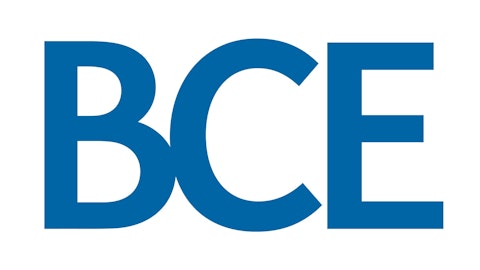The Internet monolith of Google Inc (NASDAQ:GOOG) is continuing to flex its technological muscle. The Silicon Valley giant announced that Google’s high-speed Internet and video project called Google Fiber will be expanding into Austin, Texas after Fiber’s launch in Kansas City last year. Investors appear to be energized about the prospects of superfast Internet and a new way to be an official “cable-cutter” in their own locales.
The Google Inc (NASDAQ:GOOG) Fiber project itself poses an important question: will ultra-high speed fiber-optic Internet and video services actually become feasible for the entire United States, or will the “high-fiber” diet turn out to be a fad? As of now, looming costs and government regulations are tying down the integration of superfast Internet – but these barriers can be overcome within the next decade if the companies discussed make the right steps to please consumers and strengthen the overall Internet infrastructure.

Google Fiber Is Turning Heads…
Google Inc (NASDAQ:GOOG) Fiber is sending rumblings all throughout the telecommunications industry because the project offers Internet speeds of up to one gigabit, or 1 billion bits of information, per second. That’s 10 times faster than what most Internet users see. The even better news? The incredible speeds are offered at a lower price than the current, slower speeds. If superfast Internet like Google Fiber spreads to more consumers and markets, the entire American marketplace would be literally revolutionized almost overnight.
In Kansas City, where Google Inc (NASDAQ:GOOG) Fiber was first introduced, the project has helped spur local consumers to abandon traditional Internet Service Providers (ISPs) and television options such as AT&T Inc. (NYSE:T) and Verizon Communications Inc. (NYSE:VZ). And in Austin Google is planning on not only installing the revolutionary Google Inc (NASDAQ:GOOG) Fiber technology but also providing the slower Internet connection completely free of charge to lower income residents – for up to seven years. It would appear that AT&T Inc. (NYSE:T) and Verizon should be taking note of this momentous development, but instead the companies seem to have an air of profound indifference towards Google Fiber for the most part.
…So Why Is the Superfast Internet Revolution Stalling?
According to Google, the Fiber project is simply an aim to drive current ISPs, particularly AT&T and Verizon Communications Inc. (NYSE:VZ), to provide higher Internet speeds. Google doesn’t want to become an ISP itself – yet. However, the effects of Google’s efforts seem to be minimal at best so far. The “big boy” ISP companies aren’t exactly falling over themselves to continue the push to superfast Internet.
As Karl Bode pithily noted on April 9:
The goal of Google Fiber is to generate press, gather real-world data on networks and video ad delivery, and light a fire under the pampered behinds of incumbent broadband operators, with the fleeting hope that tomorrow’s networks will come just a fraction more quickly to an uncompetitive market. The goal was never to take the project nationally, though the company certainly benefits from people thinking that’s a possibility.
For example, Verizon has stalled the expansion of its own high-speed Internet network called FiOS indefinitely. It is estimated that Google Fiber’s Internet speeds are three times faster than FiOS, and Verizon would have to invest hefty sums in order to make FiOS widespread. Other companies, like AT&T and Time Warner Cable Inc (NYSE:TWC), have been slow to invest in ultrafast broadband.
Why has the superfast Internet revolution stalled? One of the main underlying reasons is, as expected, money. Another main reason is bureaucratic red tape standing in the way of the Fiber project.
Let’s face it: if consumer demand was the only influence on Google’s executive business choices, Google would probably be busy digging up streets to place Fiber cables this moment. AT&T and Verizon probably would be pouring money out of their coffers and racing to expand ultrafast broadband networks. Unfortunately for most highly optimistic consumers, Google is NOT in the infrastructure business; rather, Google is primarily engaged in the Internet technology sector. The reality of money has set in even for a gigantic company like Google. According to calculations, in order to expand Google Fiber into 20 million homes – which would be a little more than 20 Austin-sized cities – would cost approximately between $10 billion and $15 billion.
AT&T and Verizon, although both of them are large companies, would especially not want to foot a $10-15 billion bill to expand high-speed Internet. It would make more business sense for them to stay content with their consumers paying current rates for lower speeds – in other words, giving consumers less than what they are paying for.
Also, why should Google try to push for more Fiber integration in more cities when bureaucratic red tape stands in Google’s way? A key reason that Google chose to expand into Austin is because the city owns the power company and guaranteed access to the power lines. Many of the cities and towns across America already have exclusive large contracts with AT&T, Verizon, and various other companies to provide Internet and television services.
The Bottom Line
Google Fiber is an exciting technological innovation which appears to hold much promise for the future. However, the original intent of the Google Fiber project was to simply be a catalyst for other companies like AT&T and Verizon to get their proverbial act together. Fiber was not intended to actually be an integral part of Google’s business model. Google is not, as of yet, trying to be an Internet Service Provider – Google is a technology company whose business model is fueled by the Internet lines of other companies. Currently, looming costs and government regulations are tying down the integration of superfast Internet – but these barriers can be overcome within the next decade if the companies discussed make the right steps to please consumers and strengthen the overall Internet infrastructure.
The article Google’s “High Fiber” Diet originally appeared on Fool.com is written by Evan Buck.
